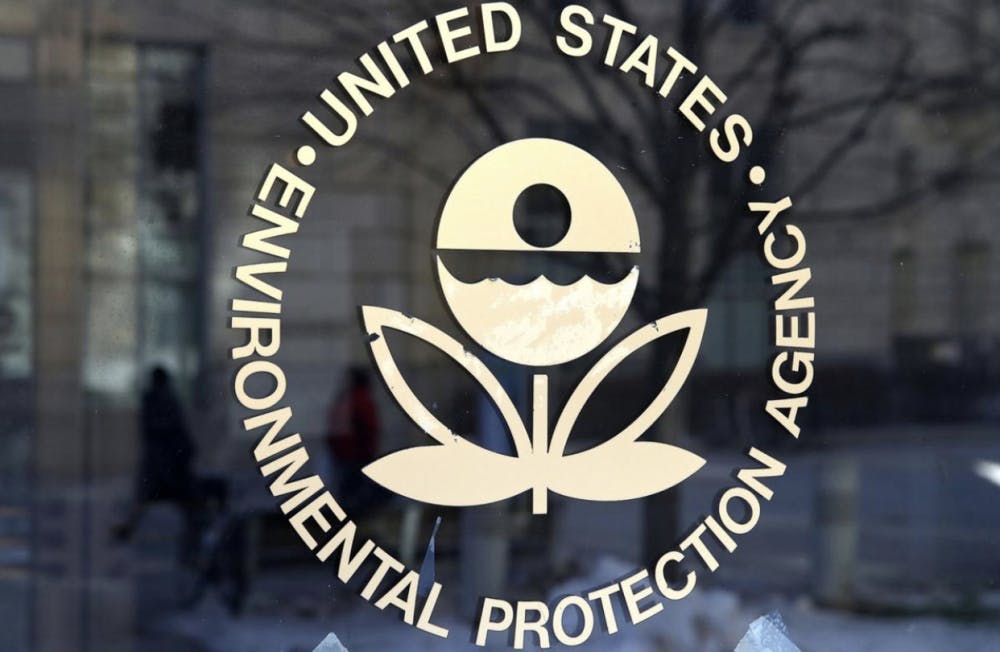BY: KELSEY PLASSE
This past spring I was desperately trying to find a summer internship. In the prior summer, I had been accepted to the Undergraduate Summer Scholar (USS) program here at Miami University for a biochemistry project. The USS program allows Miami students to carry out research during the summer term alongside a faculty member. I was excited to participate in the program; however, it was canceled due to Covid-19. Consequently, this past spring I was stressed in searching for an internship because I had no previous internship experience. I applied to a myriad of Research Experiences for Undergraduate (REU) programs in environmental science at other schools but I found no luck. Then, I saw LinkedIn postings for U.S. governmental gobs and stumbled upon https://www.usajobs.gov/. Here I applied for a job at the U.S. Environmental Protection Agency (EPA).
One day, I received an email saying I received a tentative job offer. I was so excited! After a phone interview, I was given a firm offer for the job. My official title was Biological Science Student Trainee. With my major in Biochemistry and minor in Global Perspectives on Sustainability, they told me I was a great fit to intern for one of their toxicologists. My position was technically located in Arlington, VA but the internship was remote. I worked in the Office of Superfund Remediation and Technology Innovation (OSRTI) in the branch of the Office of Land and Emergency Management (OLEM). The EPA loves their acronyms. My branch, OSRTI, works towards cleaning up the nation’s uncontrolled hazardous waste sites to protect the health of the environment and Americans. Because my supervisor was a toxicologist, she was focused on public health issues, especially issues asbestos exposure. As an intern, I worked on reviewing scientific literature related to biochemical pathways to fibrosis and the burden of fibrotic diseases. Pathways to fibrosis are important to a lot of disease states including those associated with asbestos and heavy metal exposure. At first, these topics were a little hard for me to understand because I didn’t have too much background knowledge, but with more experience came more understanding.
Another big topic my branch, and the whole EPA in general, is concerned with is “forever chemicals”, specifically Perfluorooctanoic Acid (PFAS) and Perfluoroocytl Sulfonate (PFOS). These chemicals contain a carbon-fluorine bond which is one of the strongest bonds in nature. Consequently, they are termed as forever chemicals because they are extremely hard to break down which makes them a persistent environmental pollutant. These compounds were invented in the 1930s and were widely used for their unique abilities such as their non-stick properties, heat resistance, ability to repel water, and ability to repel oil. Because of these properties, they were used in various products such as food packaging, waterproof clothing, nonstick cookware, and firefighting foams. A leading manufacturer of PFAS was DuPont Chemical Company who used these chemicals in their Teflon products (nonstick cookware). Later it was revealed that DuPont was burying evidence about the potential health and environmental health hazards that PFAS caused. They were dumping their chemicals into the Ohio River which contaminated the drinking water supplies for thousands of people. As one would expect, a major lawsuit was filed against DuPont.
Today, low levels of PFAS and PFOS can be found in the blood of people and animals all around the world. These chemicals are even present in various foods. Some recent evidence shows that these chemicals can potentially have very harmful effects at high levels; however, a lot is still unknown, like how to efficiently detect them, how many people have been exposed, exactly how harmful PFAS are to humans and their environment, how to remove them from drinking water, and how to dispose of them. Consequently, a lot more research about PFAS needs to be done. I think this topic is very interesting and is one that I would like to continue researching myself.
Overall I really enjoyed the internship; although, I wish it could have been in person. It was really reassuring to be a part of a large community that was concerned with environmental matters. I am a senior this year and I plan to pursue a master’s degree in environmental and green chemistry or a related field after graduation. I would definitely like to consider working with the EPA again in the future.
Resources:
Watch these to learn more about PFAS:
A documentary about DuPont and PFAS: The Devil We Know (https://thedevilweknow.com/see-the-film/)
A dramatized film about the DuPont lawsuit: Dark Waters (2019)
Some reading about the DuPont lawsuit: https://www.ewg.org/news-insights/news-release/dupont-chemours-and-corteva-reach-4-billion-settlement-forever-chemicals
The EPAs website about PFAS: https://www.epa.gov/pfas




